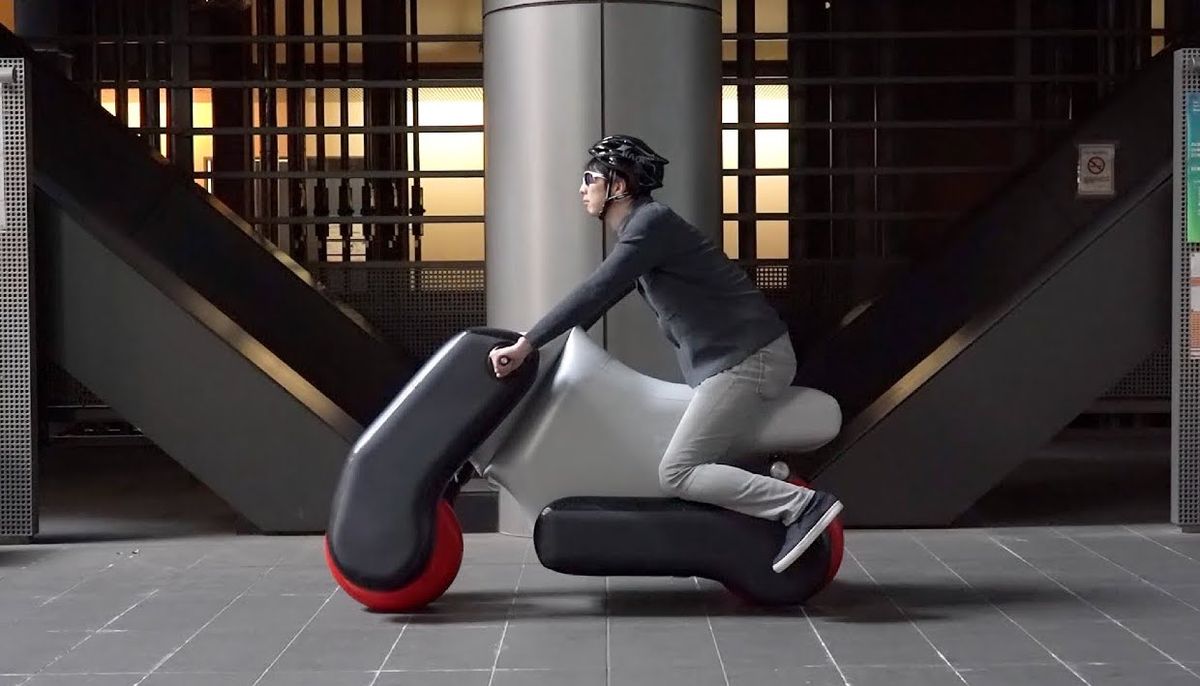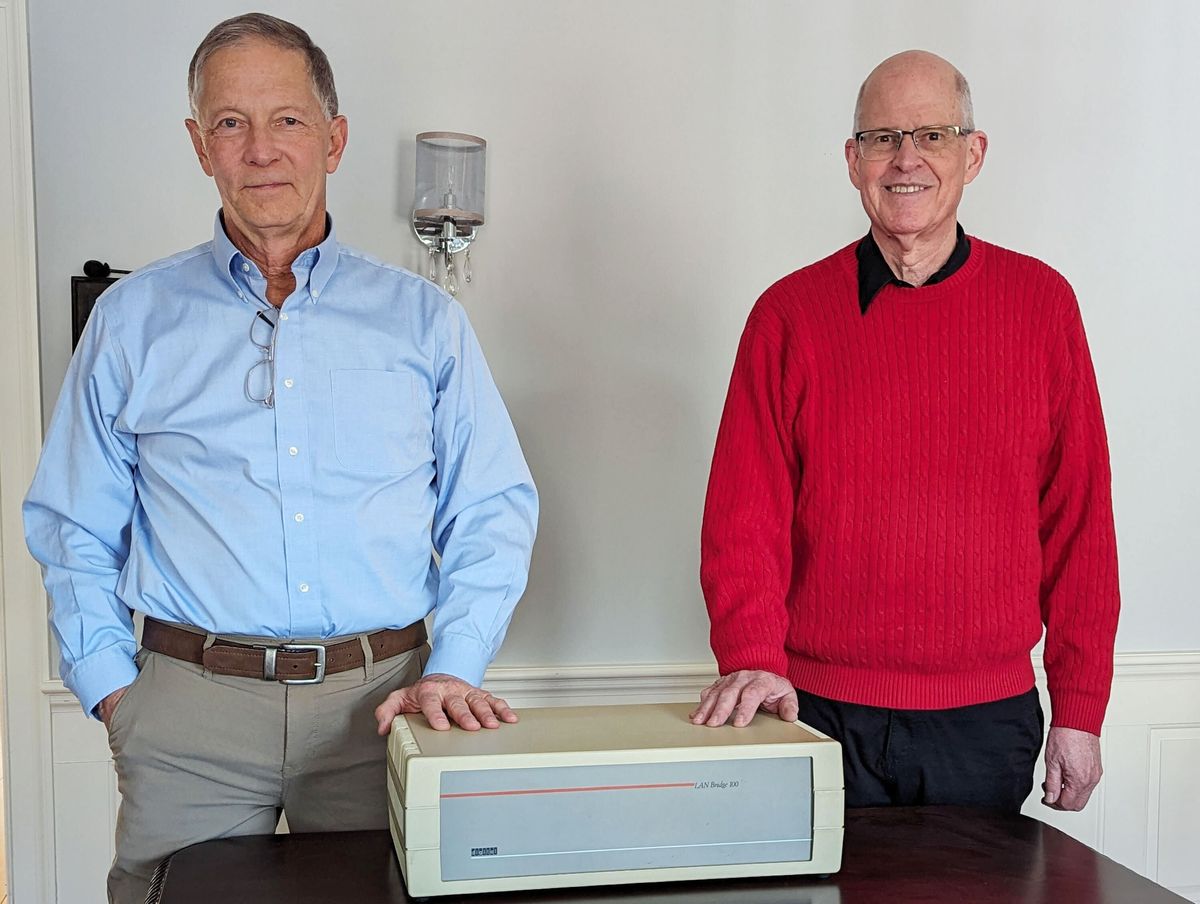Video Friday is your weekly selection of awesome robotics videos, collected by your Automaton bloggers. We’ll also be posting a weekly calendar of upcoming robotics events for the next few months; here's what we have so far (send us your events!):
IROS 2020 – October 25-29, 2020 – [Online]
ROS World 2020 – November 12, 2020 – [Online]
CYBATHLON 2020 – November 13-14, 2020 – [Online]
ICSR 2020 – November 14-16, 2020 – Golden, Colo., USA
Let us know if you have suggestions for next week, and enjoy today's videos.
Engineers at the University of California San Diego have built a squid-like robot that can swim untethered, propelling itself by generating jets of water. The robot carries its own power source inside its body. It can also carry a sensor, such as a camera, for underwater exploration.
[ UCSD ]
Thanks Ioana!
Shark Robotics, French and European leader in Unmanned Ground Vehicles, is announcing today a disinfection add-on for Boston Dynamics Spot robot, designed to fight the COVID-19 pandemic. The Spot robot with Shark’s purpose-built disinfection payload can decontaminate up to 2,000 m2 in 15 minutes, in any space that needs to be sanitized - such as hospitals, metro stations, offices, warehouses or facilities.
[ Shark Robotics ]
Here’s an update on the Poimo portable inflatable mobility project we wrote about a little while ago; while not strictly robotics, it seems like it holds some promise for rapidly developing different soft structures that robotics might find useful.
Thanks Ryuma!
Pretty cool that you can do useful force feedback teleop while video chatting through a “regular broadband Internet connection.” Although, what “regular” means to you is a bit subjective, right?
[ HEBI Robotics ]
Thanks Dave!
While NASA's Mars rover Perseverance travels through space toward the Red Planet, its nearly identical rover twin is hard at work on Earth. The vehicle system test bed (VSTB) rover named OPTIMISM is a full-scale engineering version of the Mars-bound rover. It is used to test hardware and software before the commands are sent up to the Perseverance rover.
[ NASA ]
Jacquard takes ordinary, familiar objects and enhances them with new digital abilities and experiences, while remaining true to their original purpose — like being your favorite jacket, backpack or a pair of shoes that you love to wear.
Our ambition is simple: to make life easier. By staying connected to your digital world, your things can do so much more. Skip a song by brushing your sleeve. Take a picture by tapping on a shoulder strap. Get reminded about the phone you left behind with a blink of light or a haptic buzz on your cuff.
[ Google ATAP ]
Should you attend the IROS 2020 workshop on “Planetary Exploration Robots: Challenges and Opportunities”? Of course you should!
[ Workshop ]
Kuka makes a lot of these videos where I can’t help but think that if they put as much effort into programming the robot as they did into producing the video, the result would be much more impressive.
[ Kuka ]
The Colorado School of Mines is one of the first customers to buy a Spot robot from Boston Dynamics to help with robotics research. Watch as scientists take Spot into the school's mine for the first time.
A very interesting soft(ish) actuator from Ayato Kanada at Kyushu University's Control Engineering Lab.
A flexible ultrasonic motor (FUSM), which generates linear motion as a novel soft actuator. This motor consists of a single metal cube stator with a hole and an elastic elongated coil spring inserted into the hole. When voltages are applied to piezoelectric plates on the stator, the coil spring moves back and forward as a linear slider. In the FUSM that uses the friction drive as the principle, the most important parameter for optimizing its output is the preload between the stator and slider. The coil spring has a slightly larger diameter than the stator hole and generates the preload by expanding in a radial direction. The coil springs act not only as a flexible slider but also as a resistive positional sensor. Changes in the resistance between the stator and the coil spring end are converted to a voltage and used for position detection.
Thanks Ayato!
We show how to use the limbs of a quadruped robot to identify fine-grained soil, representative for Martian regolith.
[ Paper ] via [ ANYmal Research ]
PR2 is serving breakfast and cleaning up afterwards. It’s slow, but all you have to do is eat and leave.
That poor PR2 is a little more naked than it's probably comfortable with.
[ EASE ]
NVIDIA researchers present a hierarchical framework that combines model-based control and reinforcement learning (RL) to synthesize robust controllers for a quadruped robot (the Unitree Laikago).
[ NVIDIA ]
What's interesting about this assembly task is that the robot is using its arm only for positioning, and doing the actual assembly with just fingers.
[ RC2L ]
In this electronics assembly application, Kawasaki's cobot duAro2 uses a tool changing station to tackle a multitude of tasks and assemble different CPU models.
Okay but can it apply thermal paste to a CPU in the right way? Personally, I find that impossible.
[ Kawasaki ]
You only need to watch this video long enough to appreciate the concept of putting a robot on a robot.
[ Impress ]
In this lecture, we’ll hear from the man behind one of the biggest robotics companies in the world, Boston Dynamics, whose robotic dog, Spot, has been used to encourage social distancing in Singapore and is now getting ready for FDA approval to be able to measure patients’ vital signs in hospitals.
Greg Kahn from UC Berkeley wrote in to share his recent dissertation talk on “Mobile Robot Learning.”
In order to create mobile robots that can autonomously navigate real-world environments, we need generalizable perception and control systems that can reason about the outcomes of navigational decisions. Learning-based methods, in which the robot learns to navigate by observing the outcomes of navigational decisions in the real world, offer considerable promise for obtaining these intelligent navigation systems. However, there are many challenges impeding mobile robots from autonomously learning to act in the real-world, in particular (1) sample-efficiency--how to learn using a limited amount of data? (2) supervision--how to tell the robot what to do? and (3) safety--how to ensure the robot and environment are not damaged or destroyed during learning? In this talk, I will present deep reinforcement learning methods for addressing these real world mobile robot learning challenges and show results which enable ground and aerial robots to navigate in complex indoor and outdoor environments.
[ UC Berkeley ]
Thanks Greg!
Leila Takayama from UC Santa Cruz (and previously Google X and Willow Garage) gives a talk entitled “Toward a more human-centered future of robotics.”
Robots are no longer only in outer space, in factory cages, or in our imaginations. We interact with robotic agents when withdrawing cash from bank ATMs, driving cars with adaptive cruise control, and tuning our smart home thermostats. In the moment of those interactions with robotic agents, we behave in ways that do not necessarily align with the rational belief that robots are just plain machines. Through a combination of controlled experiments and field studies, we use theories and concepts from the social sciences to explore ways that human and robotic agents come together, including how people interact with personal robots and how people interact through telepresence robots. Together, we will explore topics and raise questions about the psychology of human-robot interaction and how we could invent a future of a more human-centered robotics that we actually want to live in.
[ Leila Takayama ]
Roboticist and stand-up comedian Naomi Fitter from Oregon State University gives a talk on “Everything I Know about Telepresence.”
Telepresence robots hold promise to connect people by providing videoconferencing and navigation abilities in far-away environments. At the same time, the impacts of current commercial telepresence robots are not well understood, and circumstances of robot use including internet connection stability, odd personalizations, and interpersonal relationship between a robot operator and people co-located with the robot can overshadow the benefit of the robot itself. And although the idea of telepresence robots has been around for over two decades, available nonverbal expressive abilities through telepresence robots are limited, and suitable operator user interfaces for the robot (for example, controls that allow for the operator to hold a conversation and move the robot simultaneously) remain elusive. So where should we be using telepresence robots? Are there any pitfalls to watch out for? What do we know about potential robot expressivity and user interfaces? This talk will cover my attempts to address these questions and ways in which the robotics research community can build off of this work
[ Talking Robotics ]
Evan Ackerman is a senior editor at IEEE Spectrum. Since 2007, he has written over 6,000 articles on robotics and technology. He has a degree in Martian geology and is excellent at playing bagpipes.
Erico Guizzo is the Director of Digital Innovation at IEEE Spectrum, and cofounder of the IEEE Robots Guide, an award-winning interactive site about robotics. He oversees the operation, integration, and new feature development for all digital properties and platforms, including the Spectrum website, newsletters, CMS, editorial workflow systems, and analytics and AI tools. An IEEE Member, he is an electrical engineer by training and has a master’s degree in science writing from MIT.


